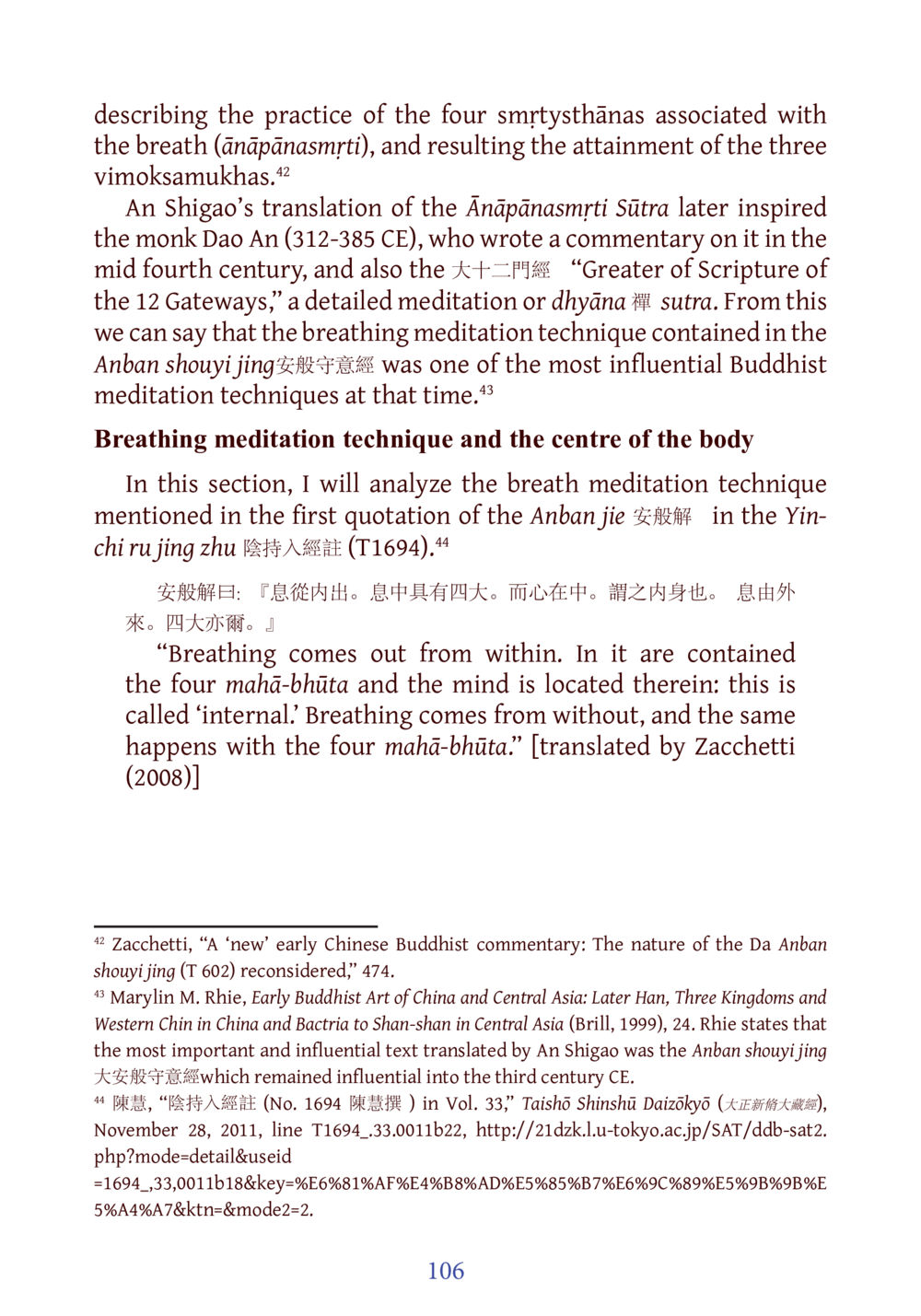The Practice of Ānāpānasmṛti: Breath Meditation in Early Buddhism : หน้า 127/141
DIRI Journal : หน้า 127/141 An exploration of the four smrtyṣhānas of breath meditation and its significance in the attainment of three vimoksamukhās, tracing its historical influence and techniques.
0 ครั้ง

สรุปเนื้อหา
This text delves into the practice of Ānāpānasmṛti, a significant Buddhist meditation focused on breath. It highlights An Shigao’s translation of the Ānāpānasmṛti Sūtra and its influence on later monks such as Dao An. The breath meditation technique described in the Anban shouyi jing emphasizes the connection between breath and the four maha-bhūta, revealing its centrality to understanding the self and meditation practice. The insights gained from these teachings contributed significantly to the development of meditation practices in early Buddhism, influencing many subsequent texts and techniques. The essence of breathing as linked to the internal and external states provides deep insights into the nature of existence, making this technique one of the most crucial in Buddhist meditation history.
หัวข้อประเด็น
-Breath Meditation
-Ānāpānasmṛti
-Vimoksamukhās
-Historical Influence of An Shigao
-Techniques in Dhyāna
ข้อความต้นฉบับในหน้า
หน้าหนังสือทั้งหมด













































































































































